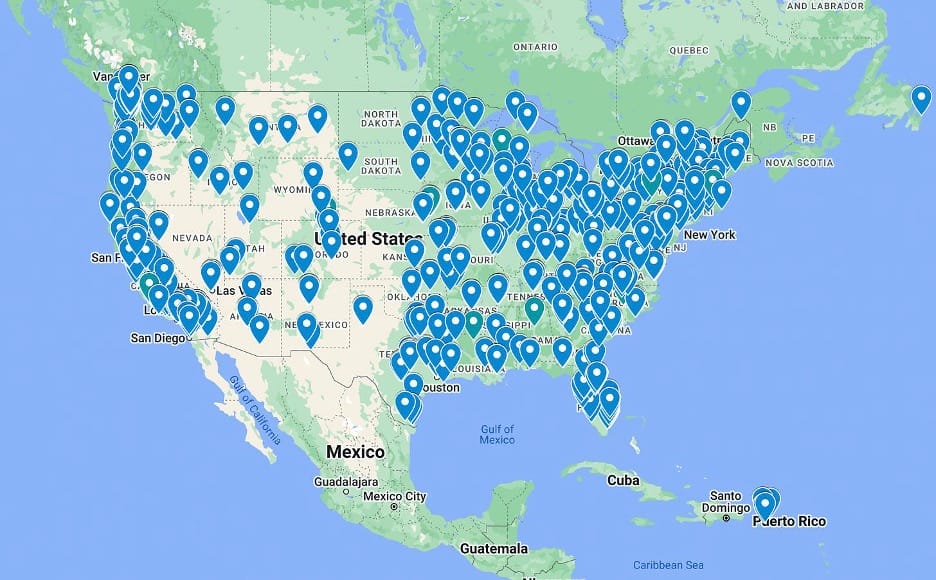Trans Technologies, a new book from MIT Press and written by University of Michigan researcher and faculty member Oliver L. Haimson, Ph.D. explores the creative and novel ways technologies are being utilized to address the inequalities the transgender community faces, highlight and correct misinformation, and grow safety, acceptance, equitability, and visibility.
“Trans technologies,” as Haimson explains in the book (he also includes definitions from trans tech creators), are “built or adapted to address the specific concerns and needs of trans people and communities.” On a more theoretical level, trans technologies “embody or support themes or characteristics of transness.”

Haimson uses a broad brush to paint his definition, adapting the concept to a wide variety of digital and analog applications “designed or adapted to help address some of the challenges transgender people face,” including basic needs such as access to society, employment, health care, and housing. Examples include, but are not limited to:
- Apps – U-Signal, a prototype smartphone and smartwatch app to aid transgender people of color in identifying and reporting threats to their safety. The Safe Transgender Bathroom app (2021-22) helped trans people find safe/gender-neutral restrooms.
- Maps – Trans activist and journalist Erin Reed created a map to assist trans people with finding health care providers who offer hormone therapy without requiring patients to obtain a letter of eligibility “from a therapist or psychiatrist.” Reed also created a map to identify legislative attacks against the transgender community in each state.
- Websites – The Digital Transgender Archive offers a collection of historical transgender materials, including periodicals, news articles, photography.
- Browser extensions – Deadname Remover updates “trans people’s previous names with their current ones,” while Gender Neutralize replaces gendered terms with “gender-neutral alternatives.”
- Video games, augmented reality, and virtual reality – Through the Wardrobe uses augmented reality to empower “visitors [to] try out new identities via clothing and other artifacts.” Trans Fucking Rage Jam (2022) gave trans game developers the agency to channel their anger over anti-trans legislation into creative projects.

Woven throughout the book, “care” and “ambivalence” serve as grounding forces, illustrating the (sometimes simultaneous) push and pull each trans tech creator faces in concepting and creating technology to meet their own individual needs or, more ideally, working with the broader transgender community, including people with multiple marginalized identities, to address one or more of the 14 categories of challenges transgender people face, as identified by Haimson and his team of researchers. The U-Signal prototype addresses “racial injustice,” for example, while the Safe Transgender Bathroom app targeted “access to society.” Another category, “pressure to educate cisgender people about trans identities,” includes The Trans Language Primer, a web site that defines more than 200 LGBTQ terms.
“Trans care” demonstrates the ways transgender people “show up for each other when society and family fail them.” Meanwhile, ambivalence, a word Haimson notes “has a particularly trans quality,” involves “two or more distant (maybe opposite) poles between which a person wavers and that they contemplate simultaneously.” For example, trans tech creators “have agency to create technology that addresses some trans needs,” but can’t solve the societal issues at the root of them – a moving target that continues to grow with each anti-LGBTQ executive order issued, law enacted, and the continued proliferation of hate speech online and in public settings.
Another ambivalence includes funding sources for trans technology: “capitalist and anticapitalist approaches, funders’ values and community values, paid work and volunteer work, profit and mutual aid,” among others. “While each of these pairs may seem like opposites,” Haimson explains, “in reality they are closer than they seem,” and may involve more than one approach.
Trans Technologies comes at a critical moment for the transgender community. Since assuming office in January, President Donald Trump has spent an outsize amount of time targeting transgender people and censoring evidence of their existence. These efforts include restricting federal websites from nearly 200 words used to describe marginalized people and communities, including LGBTQ, gender-affirming care, transgender, nonbinary, Black, race and racism, DEI, and yes, even the word “marginalized” itself.
Also at risk is important and life-saving academic research. President Trump’s recent anti-transgender executive orders have attempted to withdraw hundreds of research grants at several prominent educational institutions. In response, and to protect federal funding, universities throughout the country are scaling back or ending DEI efforts.
Haimson explained to GLAAD the cooling effect the Trump Administration’s harmful actions could have on future transgender research, including studies on the impact of trans technology on the community:
“The funding cuts to scientific research and universities will have tangible negative effects for so many marginalized groups, including trans people,” Haimson said.
“With the crackdown on ‘DEI’ research and the list of words that academics have been advised to no longer use in grant proposals, research that aims to improve trans people’s life chances is unlikely to be funded in the future (at least in the next four years). I have already seen my colleagues who are doing crucial trans health research have their NIH grant funding taken away, which means that we will have less knowledge about health disparities and action towards how to address them.”
Haimson warned that the absence of federal funding will require the support of trans folks “who typically have very little financial means and resources.”
Trans Technologies is the result of interviews with more than 100 English-speaking technology creators, 80 percent of whom are transgender and/or nonbinary. Haimson acknowledges this limitation in not including non-Western technologies and perspectives, and that he and many of his interviewees come from “relatively privileged” backgrounds in terms of education and socio-economic status. Regardless, Trans Technologies offers readers a thorough, yet approachable look at the types of technologies and their effects, both positive and negative, on transgender people and the trans community at large.
Trans Technologies can be purchased through most major booksellers. A digital edition of the book is also available at no cost on the MIT Press website.













